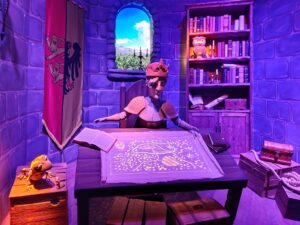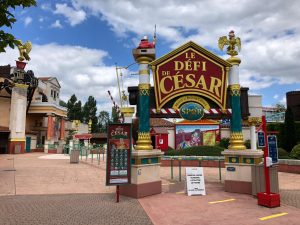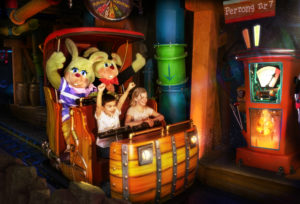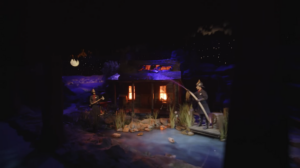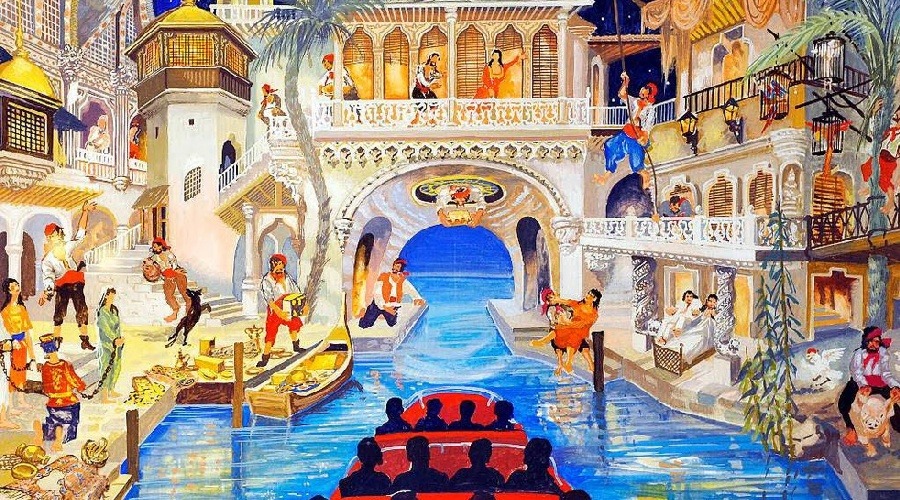
On the 28th of July, the German park Europa-Park will finally be able to re-open Piraten in Batavia. The ride, which used to be one of the major rides of the park and its largest dark ride, burnt down during a devastating fire on the 26th of May 2018. After two years of planning, designing and (re-)constructing the ride Europa-Park is now almost ready to open the upgraded version of their ride. In this article we will put the old version of Piraten in Batavia in the spotlight once again. We discuss the design of the ride, the ride experience and finally we will peek into all the things that Europa-Park has shared about the new ride.
The designer of the ride – Ulrich Damrau
Before we start talking about the original ride experience of Piraten in Batavia, we would first like to tell how the ride came into being. That story cannot be told without introducing Ulrich Damrau, the main designer of Europa-Park from 1978 until 2004. During this period, Damrau also designed Piraten in Batavia, which is by some considered to be his masterpiece. Before designing the ride however, he was already involved in the design of various themed areas of the park.
Ulrich Damrau, born in 1914 in northeast Germany, was originally a film and stage designer. He designed sets for amongst others the Dresdener State Opera and lived for several years in Turkey where he designed sets for the Turkish State Theater. He later moved back to Germany where he lived in Munich.
From here, he got involved in the design of an exposition of Märklin miniature railways which was to be held in Europa-Park. The year was 1978, the park had opened its doors only three years ago and did not yet include areas themed like countries as we know the park right now. Even though the park was already named Europa-Park, it did not have that theme in its first years. The name of the park originates from a lake near Breisach, around 30 kilometres south of the current theme park, where the park was originally planned to be build. When Damrau worked on the design of the exposition, Roland Mack (who founded the park together with his father Franz) saw his designing skills and proposed Damrau to come work for Europa-Park and make designs for the park.
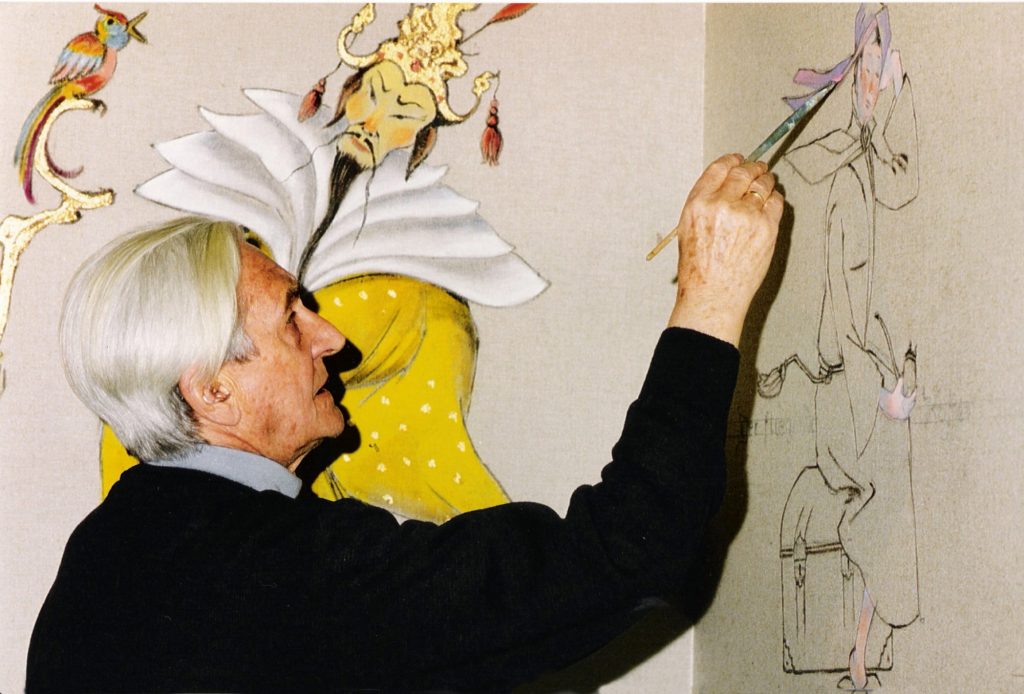
Together with the Mack family Damrau came up with the concept of a theme park dedicated to various European countries. They had the image in mind of a park where visitors would get the impression of travelling through Europe and feel the atmosphere of the specific countries. Damrau was convinced that a good depiction of the country’s architecture and other cultural and historical references would truly give the visitors that impression. He used his knowledge of architecture, building styles and building materials to construct buildings of the different countries into the finest detail. He wanted to find a way that would meet the critical eye of architectural experts but also was a clear representation of the country for park visitors with no architectural interest. To do so, he played with clichés and designed details up to furniture and streetscape. Damrau is known for never compromising on his designs: his vision had to be built up to the finest detail. He even painted some details himself, such as the reliefs in the French area.
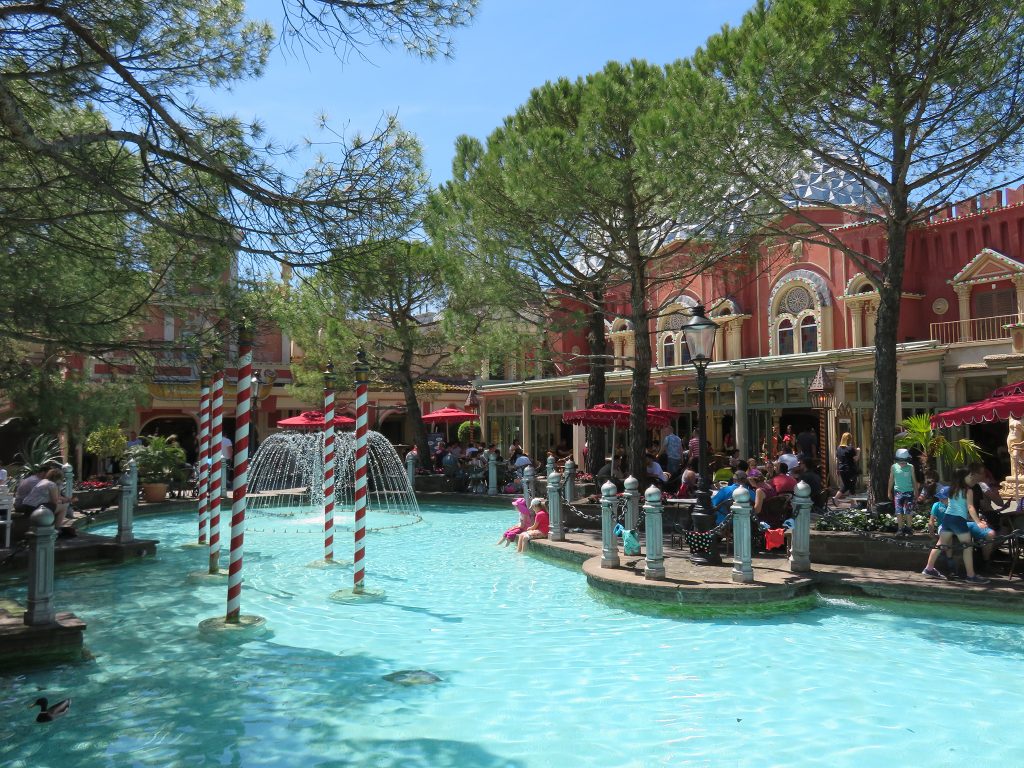
The first realized area designed by Damrau was the Italian square. He started experimenting with Belgium – since Brussels is the capital of Europe – but these plans contained too many building details and would be too expensive. Eventually, Damrau gave the Mack family a series of drawings for an Italian square, which the family constructed and opened in 1982. The area was well received by the park’s visitors, and Damrau would remain with the park to make designs for squares and rides such as the French square and of course Piraten in Batavia. “This is truly his park,” Franz Mack once said. “His ideas are really shown to the visitors and the visitors have liked his designs, even up to now.”
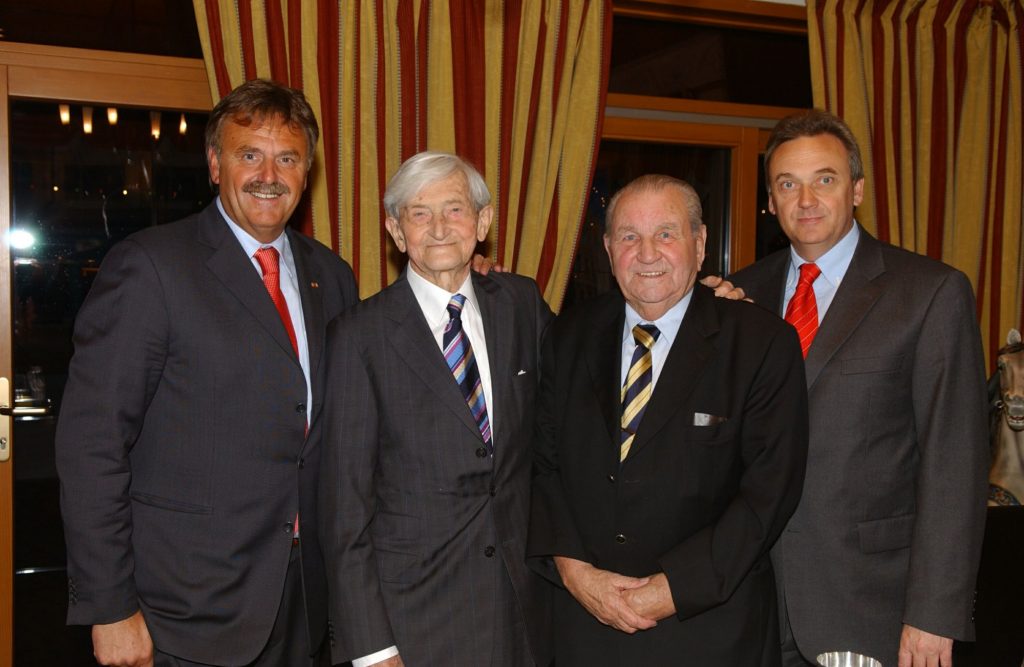
The birth of Piraten in Batavia
The Italian square was the first area Damrau designed for Europa-Park. Apart from the square, this area already included two dark rides: Geisterschloss and Ciao Bambini (the latter is now rethemed to Piccolo Mondo). It is not known to what extent Damrau was involved in the design of the interior of these rides. When the Italian area became a big success for the park, Damrau started designing a second area themed after a European country. This became the Dutch square which opened in 1984. The circular square included a couple of small rides of which some already existed before the square was built.
Along this square a new major ride would be constructed in the following years: Piraten in Batavia. This ride was Damrau’s next project and the first dark ride of which we know for certain that Damrau was the main designer. He did not only design the exterior, but also came up with the idea of the story for the ride itself and designed many of its scenes.
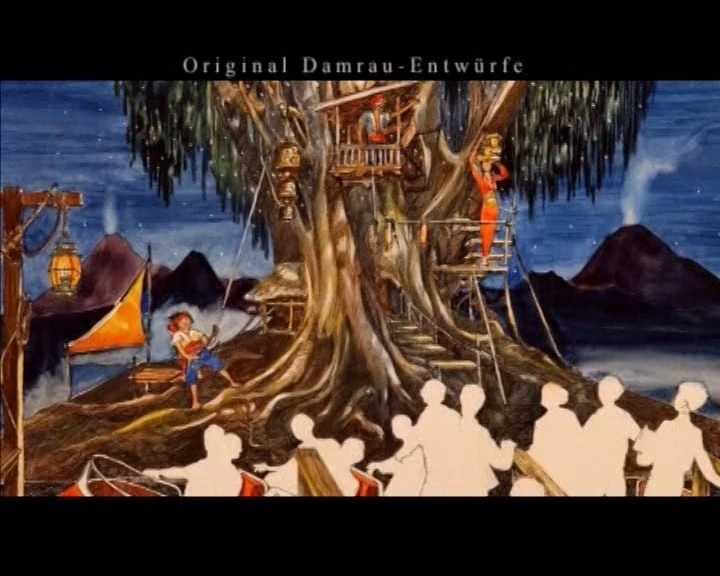
Damrau and the Mack family had the idea of building a dark ride in pirate style, a theme that they actually already used before. Back in those days, the ride which is now known as Dschungel Floßfahrt (Jungle Rafts) included some jungle and pirate animatronics. The idea for a dark ride about pirates was probably inspired by the Disney theme parks in America. It is known that the park had its inspiration for several rides from these parks: the Geisterschloss ghost train that opened a couple of years earlier includes scenes which are clearly inspired by the Haunted Mansion. The idea for Piraten in Batavia is clearly similar to the Pirates of the Caribbean rides that can be found in many Disney parks. Eventually, some of the scenes in Piraten in Batavia would be identical to scenes in Pirates of the Caribbean.
However, Damrau and the Mack family wanted to place their pirates in a different environment in a way which would fit in the European theme of the park. This change of environment would also allow them to give their own twist to the ride. Instead of the Caribbean area, the pirates were placed in Batavia. This city is nowadays known as Jakarta and used to be the capital of the Dutch colony in East-Asia. By picking this location they could fit the ride in pirate theme within the Dutch area of the park and incorporate Asian architecture and atmosphere in the ride.

The style of Ulrich Damrau could be seen throughout the entire ride. His idea for the ride was that the visitors would first see the pirates attacking the city of Batavia. Riders would be transported into the city and see all kinds of small scenes about pirates attacking the city, but all these scenes would take place into one big space: riders could look through the buildings and peek into scenes they would see later or had already seen earlier. In the scenes the inhabitants of Batavia would be suffering from the pirate’s attack and plundering, but also from excesses by colonists. It was Damrau’s idea that the riders eventually left the city and entered a jungle, where they would find the people that had fled the city living in peace and in harmony with nature.

With these ideas and sketches the Mack family decided to start constructing the ride. Little information can be found about the details of the ride’s design or about the construction of the ride. However, one famous anecdote is known about a visit of Damrau to the construction site. During the construction, Damrau and the Mack family passed by every now and then to take a look at the ongoing works. When Franz Mack visited the site one day, he accidentally fell down a hole a broke his leg. Eight days later, Damrau came to visit the site, fell down the same hole and broke his leg as well.
Encountering the Pirates – Ride experience
Piraten in Batavia was unique in its experience in Europa Park. The exterior of the ride featured a couple elements to attract people to the ride which is hidden inside, as if the ride itself was not enough. You could peek through the windows next to the entrance of the ride to see couple animatronics having a drink. While doing so, you could not miss out on hearing the parrot on the lamppost in front of the entrance. He would be calling out to recruit ‘real men’ to make an ‘adventurous journey to Batavia’.
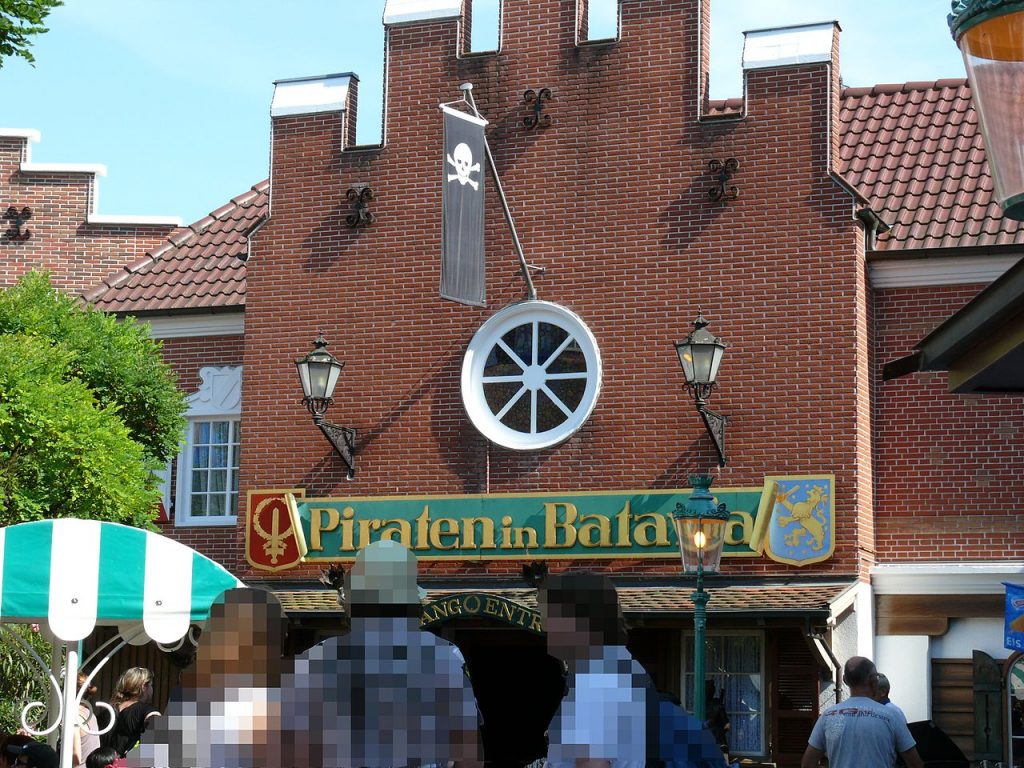
When entering the building, you would leave the Netherlands and even whole of Europe behind you and arrive into the colony of Batavia. The queue line would go up one floor and pass through a number of scenes that lay the mood for the ride. Scenes would contain animatronics of booze drinking pirates, working men (colonists and natives) doing heavy labour, soldiers overseeing the work of a slave and officers planning their next assignments. Every scene had details referring to the period and location of the story, such as maps of the East Indies and books about the Dutch East India Company (known as the Dutch abbreviation VOC for Vereenigde Oostindische Compagnie).
Eventually, you would enter the station of the ride, a dock, where a boat is ready to take you for a journey. Before boarding the boats, you would pass an animatronic of a pirate, called Keith. He would warn you: Surabaya Jim had been plundering and Batavia is burning. After this warning, your boat sets sail to Batavia. The ride and took eight minutes during which riders would pass through five large scenes. Some of these scenes took place in the same room which gave the impression of a large city, exactly like Damrau envisioned the ride.
After a 180° turn out of the station, you would be on the top of a 3-meter-tall drop and splash right into the action of the ride. This first real scene of the ride introduces the atmosphere exactly the way you would want it. A large pirate ship is laying in the bay across the fort of the Dutch Trading Company. Soldiers are trying to fight off the pirates and protect the fort. Guns and cannons are shooting on each other and you pass right in between. Pirates would zipline over your head, trying to enter the fortress. We leave the battle by passing through a small gate in the stone walls, and we enter the city of Batavia.

The second scene of the ride, called the market scene, takes place inside the city and focuses more on the life of the working-class citizens of the city. This includes market salesmen, fisherman, spinsters and even slaves. Among them, the pirates that had already found their way into the city. The scene contains a lot of interacting characters. Pirates that are chasing the women of the city, riding a bore, or getting fooled by a local boy. Some poor locals do not mind the pirates looting the rich, others try to fight them off. Our boat continues its journey.
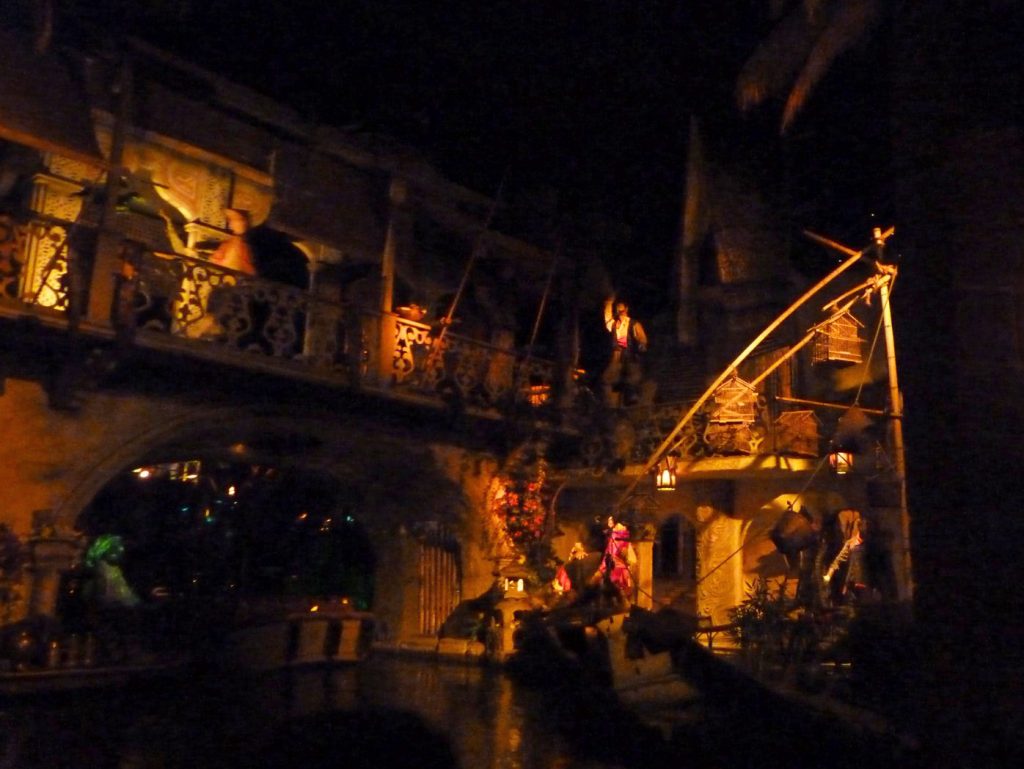
The boats sail further through the large city and we enter a higher-class neighbourhood of Batavia. Here we can see the devastating effect of the pirates: the city is burning. The pirates are trying to steal everything of value and the citizens of Batavia, both natives and colonists, are suffering from the excesses of the pirates. The pirates are celebrating their victory in the burning city, while citizens are screaming and women being violated.

From the burning neighbourhood the boats continue their journey through the plundered city, passing along the fishermen’s area. Further along our way, we can find the wreckage of ship called Batavia in the scene which is known as the prisoners-scene. A group of pirates can be seen, punishing another pirate, probably a traitor. It won’t be long before he would be in the jail that is right next door. After the jail, we leave the city and enter the next scene.
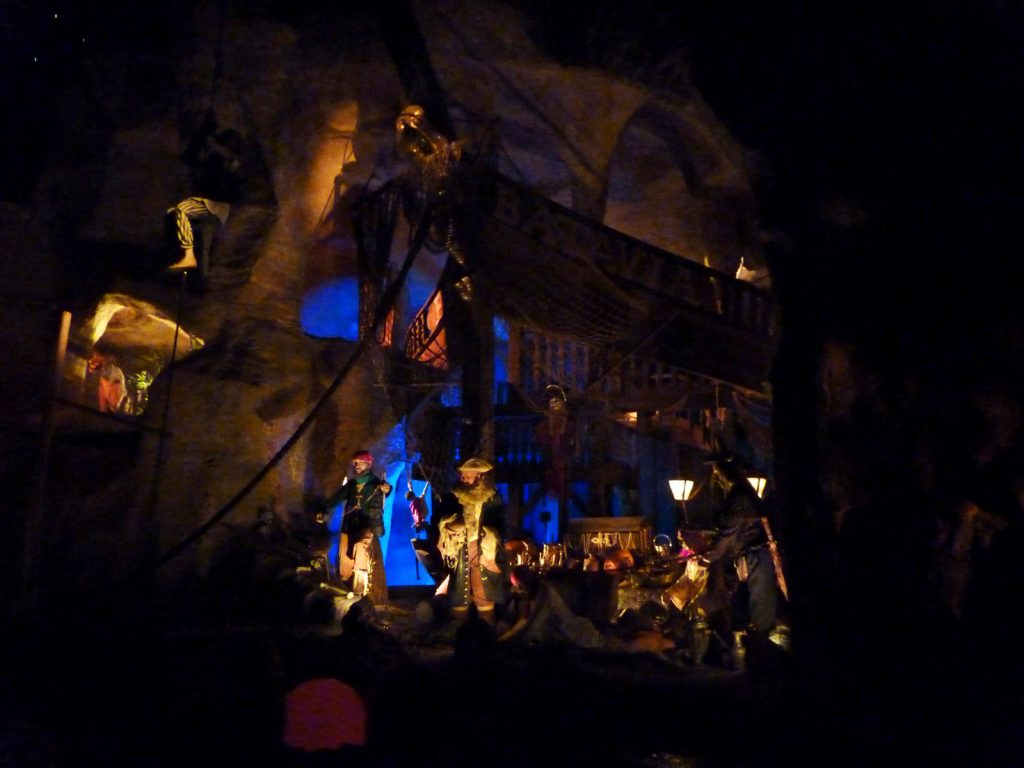
After leaving Batavia we enter the jungle, which shows more of the indigenous people of what is now Indonesia. Between some pirates and the animals of the jungle, they try to make a living by forging for food and trading with each other. Here we also find citizens from Batavia who have fled the pirates and are now living peacefully in nature, one of the ideas of Ulrich Damrau.
Since 2008, the jungle scene ends in Bamboe Baai, a unique restaurant in Europa Park. The boats would pass between the terrace of the restaurant and a small stage where a couple times a day a small show was performed. Bamboe Baai still featured heavy theming, but did not contain a lot of animatronics.
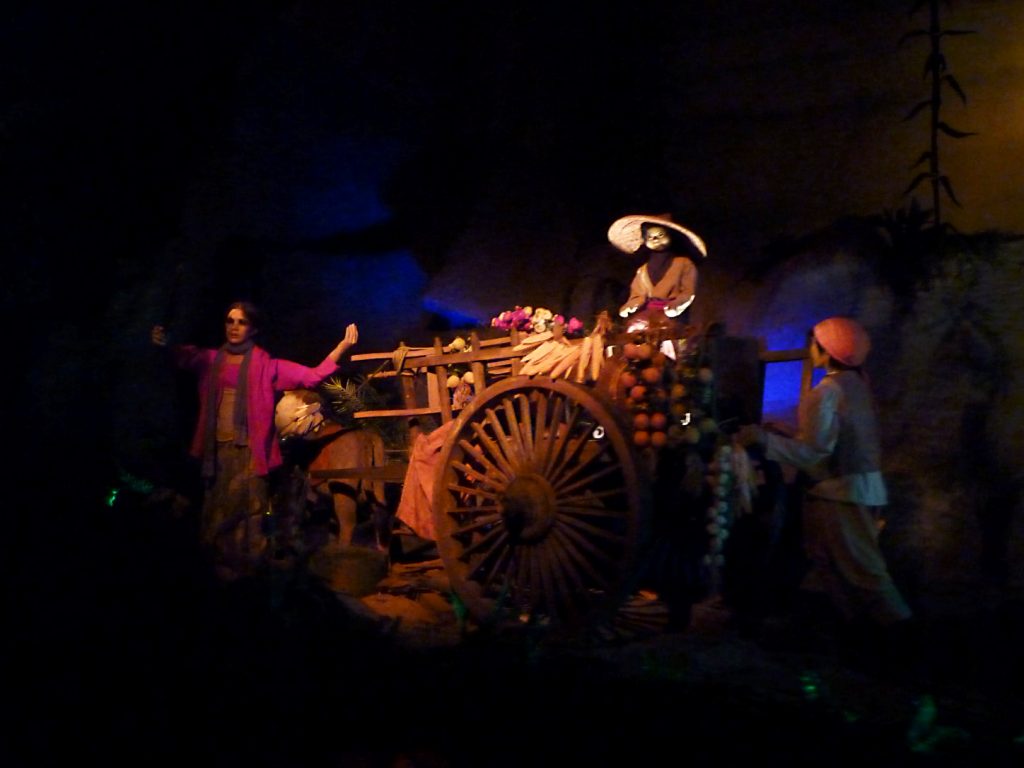
Bamboe Baai would be the last part before a separate exit station. After the splash in the beginning, the whole ride takes place on ground level. After disembarking the boats, the empty boats would go up a lift hill back into the boarding station.
Like many dark rides that date back to the 1980’s, Piraten in Batavia has received many updates through the years of its existence. Some of them were on technical basis, such as upgrades to the audio systems in 1989 and 2005, but also changes in the scenes. In 2004, a projection of dragon was added to the first scene. The projection would be on a waterfall right in front of the boat. There also used to be a gorilla animatronic in the first bend after the station. This was replaced with an animatronic of a drinking pirate in 2006 (by Calren Studios). The gorilla was relocated to the jungle scene. Throughout the years video projections were added in some scenes.
However, the most notable change is the addition of the Bamboe Baai restaurant. Before 2008, Piraten in Batavia would end with a larger jungle scene, showing more of the indigenous people. The scene was removed to make way for the restaurant and the show stage.

Turned to ashes – The devastating fire
In the evening of Saturday the 26th of May 2018, the European theme park community was shocked by pictures of a devastating fire going on in Europa-Park. As the park was still open, pictures of flames shooting out of the roof of the Piraten in Batavia building spread rapidly. It was clear that hardly anything of the ride or the adjacent Scandinavian area would survive the fire.
The fire started shortly after 6:00 PM in one of the technical rooms of the buildings along the Scandinavian street – these buildings were attached to the side of the building of Piraten in Batavia. Thanks to the fire alarm both the Scandinavian area and Piraten in Batavia could be evacuated quickly and none of the park’s visitors or employees were harmed by the fire. The rest of the park remained open and closed only area by area, to give the 25.000 visitors the time to slowly leave the park. Many of the visitors took pictures of the black smoke arising from the burning building, giving an impression of the severity of the fire.
Man will entspannt Euromir fahren und dann das:#Europapark pic.twitter.com/9FsfOTXuIR
— 🔥🧀 (@hotcheese_) May 26, 2018
The park insisted on opening its doors again on the next day, with the temporary closure of the Dutch and Scandinavian areas. In the following weeks, the park slowly opened most of the Dutch area and the Fjord Rafting ride, but it was clear that the Scandinavian street and Piraten in Batavia would not be able to re-open that soon. Only two weeks later, the park announced that both of them however would be entirely rebuilt, almost like the old situation but with some new twists. The Scandinavian street would reopen on the 23rd of July 2019, only a year after the fire. A cellar underneath the area was expanded and welcomed a new dark ride, Snorri Touren, which opened on the 22nd of October of that year. The reconstruction of Piraten in Batavia would take until the 28th of July 2020.
Brand im #Europapark! Skandinavien ist weg 😢 pic.twitter.com/jccI5FNTSr
— Magnolienbaum (@creamyCheek) May 26, 2018
Rebirth of the ride
During the last two years Europa-Park has worked hard on redesigning Piraten in Batavia, and during this time the park kept its fans up-to-date with many video and photo updates of the renewed ride. These videos already give us quite some insights in what we can expect from the upgraded version of Piraten in Batavia. In one of the videos published by EP Weekly, main designer Patrick Heinzelmann explains how the park tries to balance the old ride and new influences in the design: “It is not that easy to rebuild this ride. We want to have the old atmosphere and give people the nostalgic feeling of the old ride, while simultaneously offering something new.”
An example of the old nostalgic feeling of the ride can be found in the ‘boat of the survivors’, a ship that will be visible in one of the ride’s scenes which contains the few animatronics that were retrieved from the old ride after the fire. Not only the atmosphere and feeling of the ride would stay close to the old version of the ride: the park was also bound to the original floorplan and kept the same ride lay-out. Nevertheless, the entire ride system was redesigned to match the modern safety and quality standards. The park has for example shown many pictures of the new boats for the ride, which are entirely redesigned.

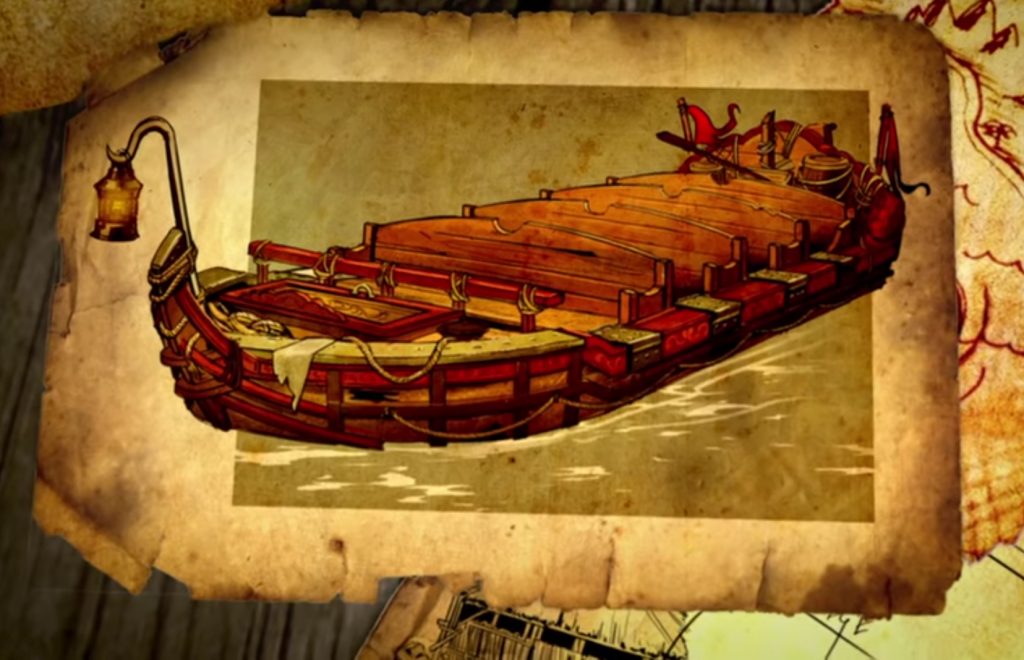
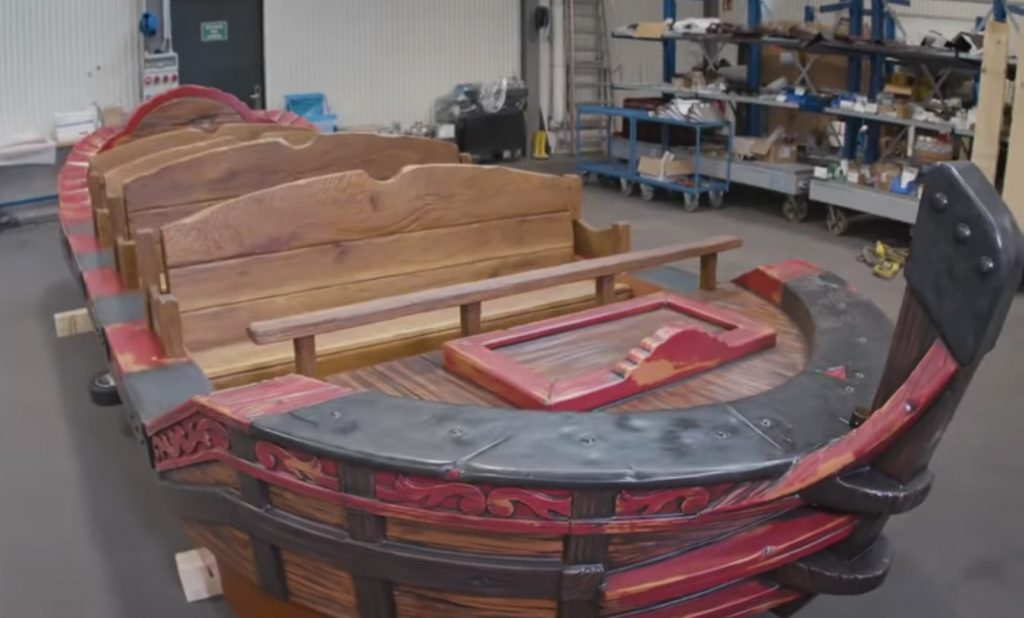
The park has also announced many changes which they made to the design of the ride. In the old ride, visitors would immediately step into Batavia as soon as they entered the queue line. Asia was only one step away from the Dutch square. In the new ride, the park has removed this sudden change of environment. Guests will now queue in a Dutch area, step into their boat in the harbour of Amsterdam and then set sail to Batavia.
Many pictures were revealed on the design of the queue, the station, and the scenes of the ride. Most of them show a mix of the atmosphere of the old ride and modern interpretations and techniques: modern-day animatronics placed in the Batavia-environment that we were used to, well-known jungle settings constructed in a brand new way. It is clear that the ride will remain close to its predecessor, without losing the technical improvements from the last 30 years out of sight.
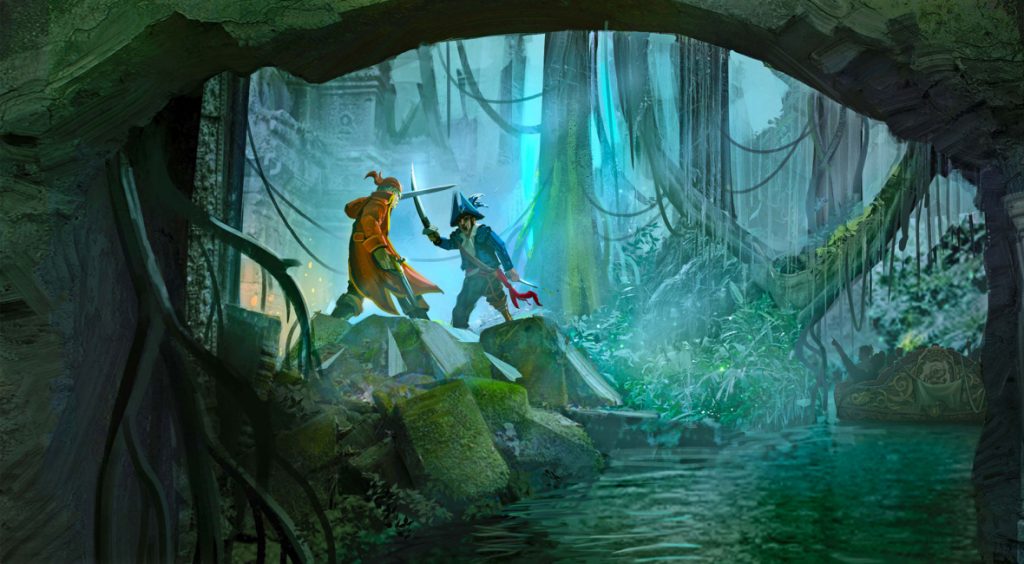

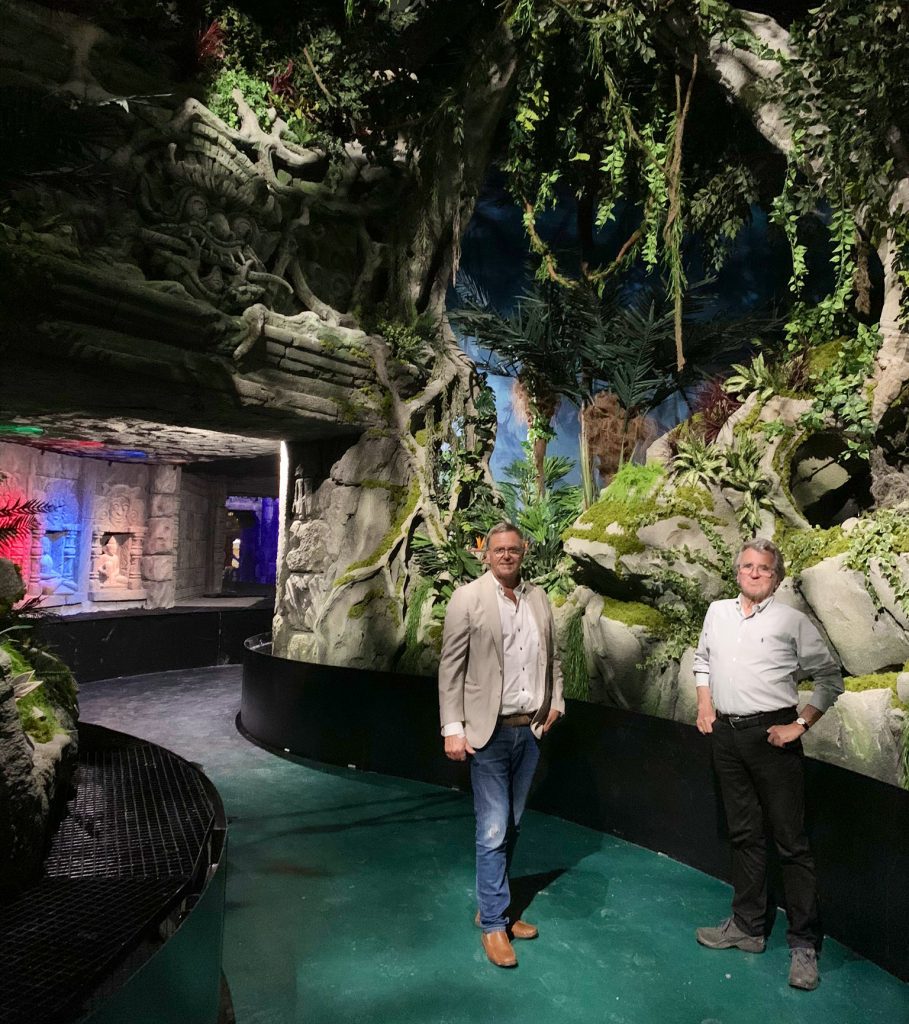
Even though the park has shown a lot of information on the rebuild ride already, many more things are waiting to be revealed about the reconstructed version of Piraten in Batavia. Since the park has opened its doors for the 2020 season, guests can visit the preview centre to have a peek of what the reconstructed ride will entail. The preview centre is located in the future queue line of the ride. We need to wait for just a few days until the queue line will finally receive the first visitors to the reborn Piraten in Batavia. The grand opening of the ride is planned for the 28th of July. We cannot wait to see how Piraten in Batavia has reborn from its ashes, and we will keep you posted during the ride’s opening.
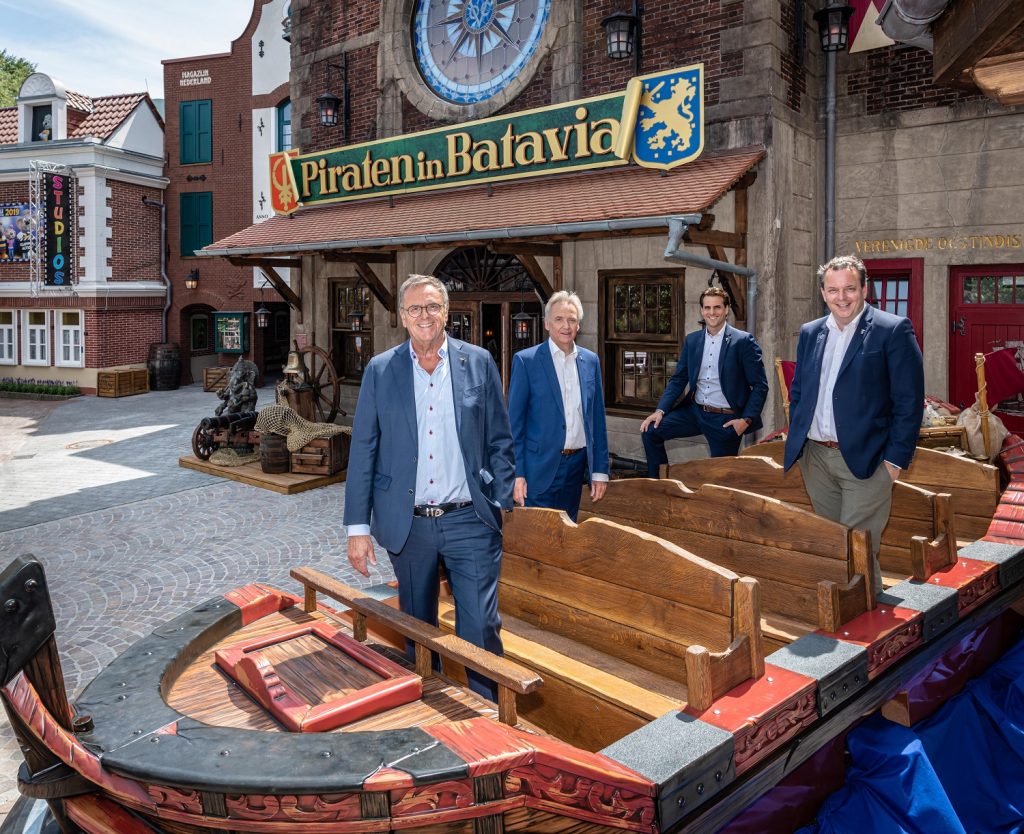
References
Ulrich Damrau & History of Piraten in Batavia
- Ulrich Damrau Europa Park: https://www.youtube.com/watch?v=sgwYPzRa6i8
- Roland Mack – King of Fun (2015) Biography of Roland Mack written by Benno Stieber
- Das Multitalent Ulrich Damrau – http://presse.europapark.com/de/presse/nachricht/datum/2020/04/20/das-multitalent-ulrich-damrau/
- Ulrich Damrau lebte ein Leben für die Kunst – http://presse.europapark.com/de/presse/nachricht/datum/2007/05/28/ulrich-damrau-lebte-ein-leben-fuer-die-kunst/
Ride experience
- Afscheid van Batavia: Alles over Europa-Parks grootste darkride – https://pretparken.be/NL/article/1962/Afscheid-van-Batavia–alles-over-Europa-Parks-grootste-darkride
- Goodbye, Piraten in Batavia – https://www.youtube.com/watch?v=Tf-gfSnSUSk
The fire
- Wikipedia: https://de.wikipedia.org/wiki/Europa-Park#Gro%C3%9Fbrand_am_26._Mai_2018
(and linked sources in the Wikipedia-article)
Rebirth of the ride
- Europa-Park Weekly folge 2 – https://www.youtube.com/watch?v=3lfRXP49Rz0
- The Making of Piraten in Batavia 1-4 – https://www.youtube.com/watch?v=pQfqhmW_Omg
- Europa-Park Twitter – https://twitter.com/europa_park
© 2020 Dark Ride Database
Written by: Luc and Erik
Ride layout drawn by Jim

